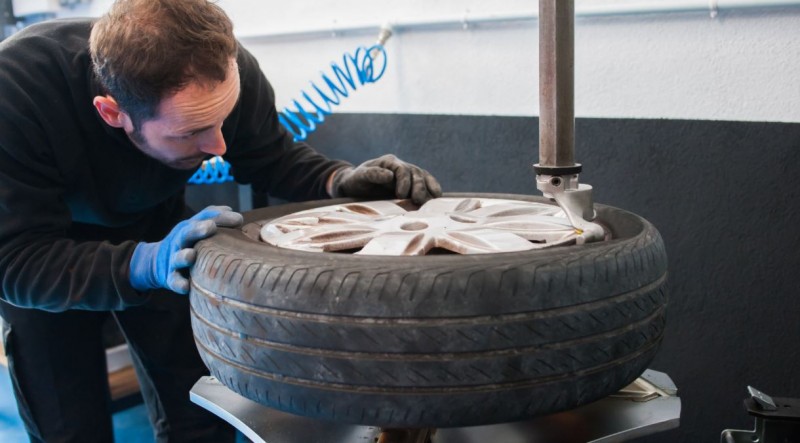
When it comes to driving in wet road conditions, ensuring your tires are in optimal condition is crucial for both safety and performance. The condition of your tires can greatly affect your vehicle's traction, braking ability, and overall handling in wet weather. In this article, we will discuss the importance of checking and maintaining your tires for wet road conditions, providing you with valuable insights and tips to keep you safe on the road.
Understanding the Impact of Wet Road Conditions on Tires
When roads are wet, the risk of hydroplaning increases, which occurs when the tires lose contact with the road surface and glide on a layer of water. This loss of traction can result in reduced control over the vehicle and increased stopping distances. Proper tire maintenance is essential to minimize these risks and ensure your tires perform optimally in wet conditions.
The Importance of Proper Tread Depth
The tread depth of your tires plays a vital role in channeling water away from the tire surface and maintaining grip on wet roads. The legal minimum tread depth is typically around 2/32 of an inch, but for wet weather conditions, it is recommended to have at least 4/32 of an inch. Use a tread depth gauge to measure the tread depth periodically and replace your tires if they are worn beyond the recommended depth.
Checking and Maintaining Tire Pressure
Proper tire pressure is crucial for maintaining optimal tire performance, especially in wet road conditions. Underinflated tires can reduce traction and increase the risk of hydroplaning, while overinflated tires can cause the tire's contact patch to decrease, resulting in reduced grip. Regularly check your tire pressure using a reliable pressure gauge and ensure they are inflated to the manufacturer's recommended levels.
Inspecting Tire Wear and Damage
Regularly inspecting your tires for wear and damage is essential for safe driving in wet conditions. Look for signs of uneven wear, bulges, cracks, or punctures. Uneven wear may indicate improper tire alignment or rotation, while bulges, cracks, or punctures can compromise the tire's integrity. If you notice any significant wear or damage, it is advisable to replace the tire immediately.
Rotating Tires for Even Wear
Tire rotation is an essential maintenance practice that promotes even tire wear and extends their lifespan. Regularly rotating your tires helps ensure balanced traction on all four wheels, providing better handling in wet road conditions. Follow the manufacturer's recommended rotation pattern, usually rotating the front and rear tires diagonally or from side to side.
The Role of Tire Alignment
Proper tire alignment is crucial for maintaining stability, handling, and tire performance. Misaligned tires can cause uneven wear, reduced fuel efficiency, and compromised handling in wet conditions. If you notice your vehicle pulling to one side or uneven tire wear, it is recommended to have a professional mechanic check and adjust your tire alignment as needed.
Considering Specialized Wet Weather Tires
In regions with frequent rainfall or wet road conditions, investing in specialized wet weather tires can significantly enhance your safety and performance. These tires are designed with unique tread patterns and rubber compounds that provide improved traction on wet surfaces. Consider consulting with a tire professional to determine if wet weather tires are suitable for your driving needs.
Driving Techniques for Wet Road Conditions
Apart from maintaining your tires, adopting appropriate driving techniques is essential for safe travel in wet weather. Reduce your speed, increase your following distance, and avoid sudden maneuvers or harsh braking. Smooth and gradual inputs allow your tires to maintain better traction and reduce the risk of skidding or hydroplaning. Stay vigilant and be aware of potential hazards on the road.
Emergency Preparedness for Wet Weather Situations
Despite taking all precautions, emergencies can still happen on wet roads. It is crucial to be prepared for such situations. Keep an emergency kit in your vehicle, including items like a spare tire, jack, lug wrench, flashlight, and reflective warning triangles. Additionally, familiarize yourself with proper techniques for handling skids and hydroplaning to react effectively if such situations arise.
Checking and maintaining your tires for wet road conditions is vital for ensuring your safety and the safety of others on the road. Regularly inspecting tread depth, tire pressure, wear, and alignment can significantly improve your vehicle's traction, handling, and braking ability in wet weather. By following the recommended maintenance practices and driving techniques discussed in this article, you can minimize the risks associated with wet road conditions and enjoy a safer driving experience.
From Foldable Phones to Smart Homes: The Ultimate Tech Review Guide
Freedom: The Key Ingredient for Personal and Professional Success